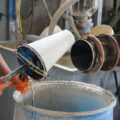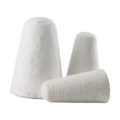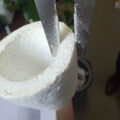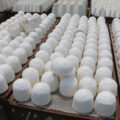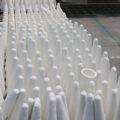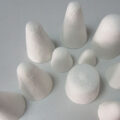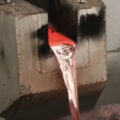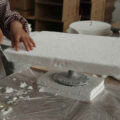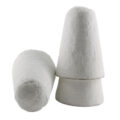There are many types of refractory materials with a wide range of uses, and their classification methods are various. The following are commonly used
Steps/Methods
Refractory materials can be divided into 8 categories according to their chemical and mineral composition:
1. Silicon material
2. Aluminum silicate material
3. Magnesium materials
4. Dolomite material
5. Chromium material
6. Carbon materials
7. Zirconium material
8. Special refractory materials.
Refractory materials can be divided into 3 categories according to their chemical properties:
1. Acid refractory materials
2. Neutral refractory materials
3. Alkaline refractory materials.
Refractory materials can be divided into three categories according to their refractoriness:
1. Ordinary refractory materials have a refractoriness of 1580-1770 degrees.
2. Advanced refractory materials with a refractoriness of 1770-2000 degrees.
3. Special grade refractory material with a refractoriness higher than 2000 degrees.
Refractory materials can be divided into 7 categories according to the molding process:
1. Natural rock processing and shaping
2. Pressed refractory materials
3. Casting refractory materials
4. Plastic moldable refractory materials
5. Ramming and forming refractory materials
6. Injection molded refractory materials
7. Extrusion refractory materials.
Refractory materials can be divided into 4 categories according to heat treatment methods:
1. Burn into bricks
2. No brick burning
3. Unshaped refractory materials
4. Molten (cast) products.
Refractory materials can be divided into 5 categories according to shape and size:
1. Standard products
2. Common products
3. Products of the opposite sex
4. Special products
5. Others, such as crucibles, dishes, tubes, etc.
Refractory materials can be divided into:
1. Refractory materials for the steel industry.
2. Refractory materials for the non-ferrous metal industry.
5. Refractory materials for the petrochemical industry.
6. Refractory materials for the silicate industry (glass kiln, cement kiln, ceramic kiln, etc.).
7. Refractory materials for the power industry (power generation boilers)
8. Refractory materials for waste incineration and melting furnaces
9. Refractory materials used in other industries.



